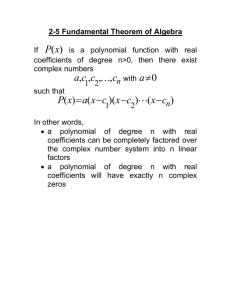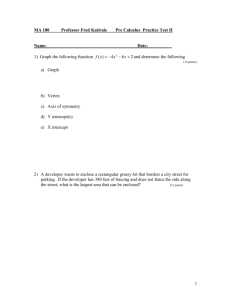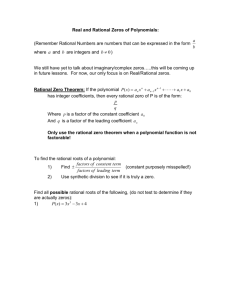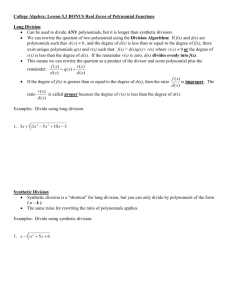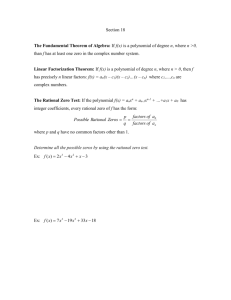Section 2
advertisement
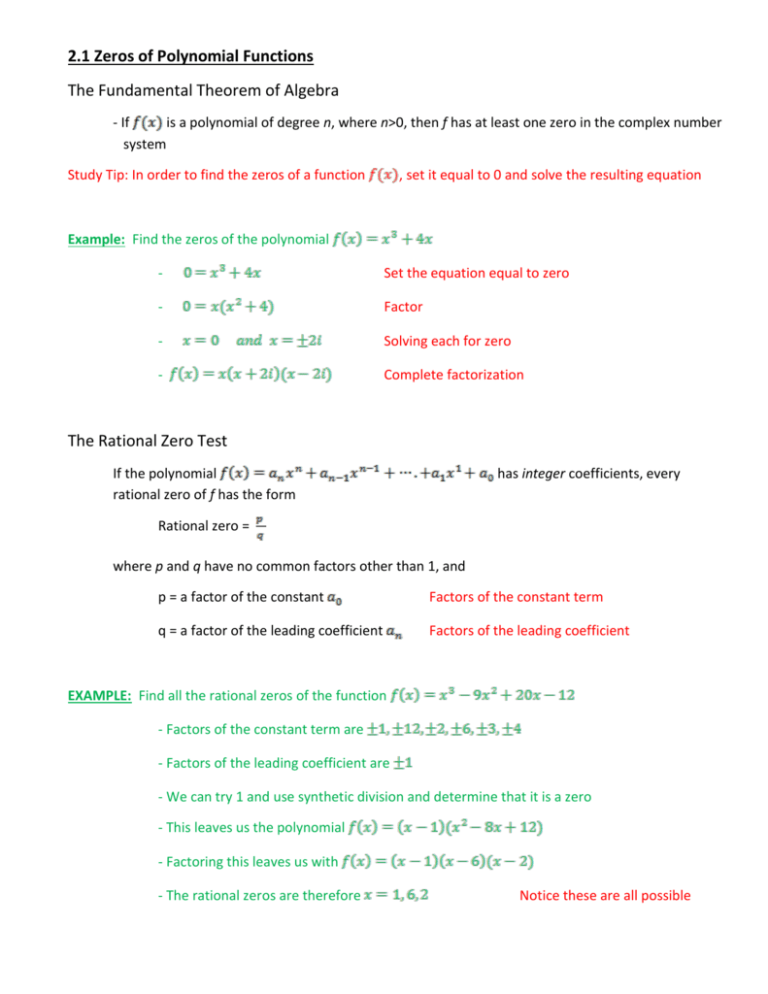
2.1 Zeros of Polynomial Functions The Fundamental Theorem of Algebra - If is a polynomial of degree n, where n>0, then f has at least one zero in the complex number system Study Tip: In order to find the zeros of a function , set it equal to 0 and solve the resulting equation Example: Find the zeros of the polynomial - Set the equation equal to zero - Factor - Solving each for zero - Complete factorization The Rational Zero Test If the polynomial rational zero of f has the form has integer coefficients, every Rational zero = where p and q have no common factors other than 1, and p = a factor of the constant Factors of the constant term q = a factor of the leading coefficient Factors of the leading coefficient EXAMPLE: Find all the rational zeros of the function - Factors of the constant term are - Factors of the leading coefficient are - We can try 1 and use synthetic division and determine that it is a zero - This leaves us the polynomial - Factoring this leaves us with - The rational zeros are therefore Notice these are all possible EXAMPLE: Factor completely. - Factors are and - Possible rational zeros are - Using the graph we can try -3 and/or 3 - Using synthetic division with 3 we obtain - Using synthetic division with -3 on the depressed equation we get - Factoring the last part we get - This gives is zeros of Notice that these are all possible Complex Zeros Occur in Conjugate Pairs Let be a polynomial function that has real coefficients. If function, the conjugate is also a zero of the function. , where , is a zero of the EXAMPLE: Find a fourth-degree polynomial function with real coefficients that has -1, -1, and 3i as zeros. - Conjugate pairs says that -3i is a zero - Foiling gives us - Finally we multiply and get EXAMPLE: Find all the zeros of given that 3i is a zero. - Since 3i is a zero, we also have to have -3i as a zero - Foiling Conjugate Pairs Theorem yields - Use long division and divide - This results in which tells us we have zeros at EXAMPLE: Find all the zeros of of linear factors. - List all the possible rational zeros and write the polynomial as a product and giving us - Using synthetic division we test -2 and get - Using grouping on the last one yields - Since we want linear factors, have to factor the last one and we get giving us zeros at EXTRA EXAMPLE: EXTRA EXAMPLE: EXTRA EXAMPLE:

